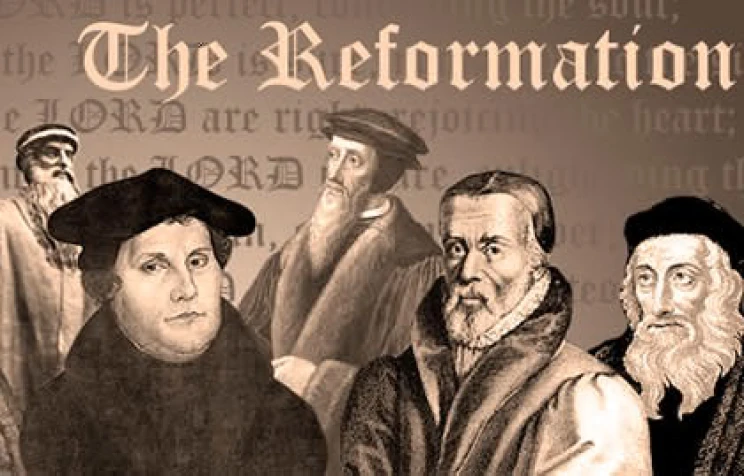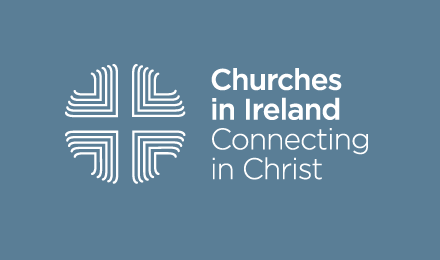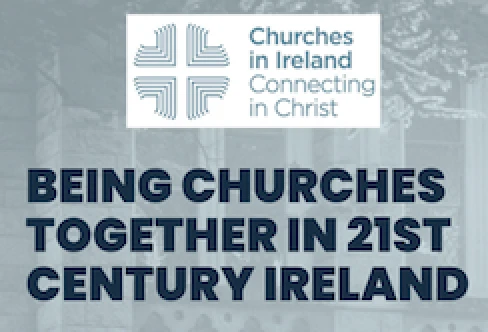
Aspects of the Reformation: Justification by Faith
In the fourth of a series of weekly blog posts, ICC President, the Rt Rev John McDowell, discusses key events in the life of Martin Luther.
The doctrines of the medieval Church were often not well defined in a dogmatic sense and Christianity was much more a religion of practice than of clearly defined belief. What Saint Paul meant when he wrote about justification by faith had been a matter for frequent debate by theologians for at least two hundred years. Different schools of thought understood it in different ways.
In the biographical passages in his writings Luther tells us of the extremes of asceticism to which he subjected himself in what he later believed to be a vain and counterproductive to please a God who would never be placated. The sermons which Luther heard and the theology he was taught made salvation a matter of God’s grace, not something that could be bought with a virtuous life, but for grace to work it was necessary for man to do what he could from his side of the equation; facere quod in se est. How could Luther know that he had ever tried hard enough? These anxieties became almost a neurotic preoccupation for Luther (and he believed for very many people) in which the soul, in Luther’s vivid description, turned in on itself — curvatus in se.
The German word which Luther used to describe these experiences is usually translated as “temptations” or “trials”, but is much more strenuous than these. Anfectungen is meant to convey what it felt like to be exposed to the wrath of God (something which we modern Christians find it very hard to recapture).
Luther first had a hand out of this morass from his superior, Johann von Staupitz, who seems also to have been his spiritual director. It was Staupitz who led Luther to understand that repentance does not end, but begins with the love of God. Our religious or moral striving is not to make God love us (the wounds of Christ are sufficient evidence that he does). Instead, they are acts of gratitude in response to God’s love which have the added benefit of also being in accordance with His character.
It was at this time that Luther, at Staupitz’s urging, took his doctorate in theology and began to teach and preach. He learned both Greek and Hebrew (the later difficult at the best of times but in Luther’s day it was almost impossible to find a teacher because of the extreme anti–Semitism which was standard throughout Europe) and began a prolonged and life–long engagement with the Biblical text.
We know that the first lectures he gave were on the Psalms, followed by Paul’s letter to the Romans, then his letter to the Galatians, followed by the letter to the Hebrews and back to the Psalms again in 1519.
It was in the middle of this course of lectures that the controversy over Indulgences and the 95 Theses erupted. Somehow or another (and there is an enormous scholarly literature on this subject) Luther’s private struggle with the Bible was brought to bear on these public events.
Luther himself referred to his theological breakthrough on quite a number of occasions, but not often in his theological writings. The references usually occur during his conversations at mealtimes, written down and later published in a book called Table Talk. Privacy as we know it was completely unknown in early Modern Europe, almost everything was done in public, including eating. However, wherever it occurs, it is always mentioned in connection with the sentence in the first chapter of St. Paul’s letter to the Romans: “For therein is the righteousness of God revealed from faith to faith: as it is written, the just shall live by faith”. During the course of his lectures on the psalms he had often reflected on the righteousness of God and it had been a source of fear to him. But now he saw that the righteousness of God’s angry reaction to our behaviour or the implacable standard by which he judges us, was his reaching out to us in love, and to trust in that love was to be justified — to be in a relationship with God which he had always intended. God is free to do as he wills and his freedom takes the form of acting so as to change us.
It is a serious mistake to think that Luther (or any serious Protestant theologian in the 16th century) believed that justification meant only a change in God’s attitude and did not also effect a change in us. This free act of God seen perfectly in the cross became central to Luther’s theology to such an extent that he divided theologians between those who were true (theologians of the Cross) and those who emphasised other more attractive areas of theology, who he mockingly called theologians of Glory.
It is one thing to discover that it is God who saved us and not ourselves but the essence of Luther’s doctrine went beyond this. Augustine had taught that God would take whatever feeble efforts a man has to turn towards Him and progressively transform that person by grace, but Luther felt that Augustine had confused two distinct things: how we are justified by God and how we are made holy by grace.
Luther would teach that we are saved by another righteousness, Christ’s righteousness, and only faith, itself a gift from God, can take hold of that righteousness. Hence his doctrine of justification by faith alone, sola fide. He taught that it was something that happens all at once (einmal) not bit by bit (stucklich). “It is like a marriage”, he said, where Christ as the bridegroom takes as his bride a wretched and depraved prostitute and at once she acquires his riches and he acquires her wretchedness. She is at the same time both a sinner and justified: simul iustus ac peccator.
To risk an oversimplification, that is the essence of the Reformation, although it may sound like a small theological intricacy to many modern people. It also summed up the essential difference in what would now shape Western Civilisation and it was essentially a difference between two understandings of human existence; two different answers to the question “What is man?”: Was his creation in the image of God carried forward triumphantly by his salvation in Christ, which is what is depicted in the exuberant Baroque churches of the Counter Reformation and which Luther called a theology of Glory. Or was he a humble, receptive creature, nobody without the overwhelming grace of God, an idea that is reflected in the plainness of so many Protestant places of worship, which are mere receptacles for the saving Word? It is the difference between Rubens and Rembrandt.





